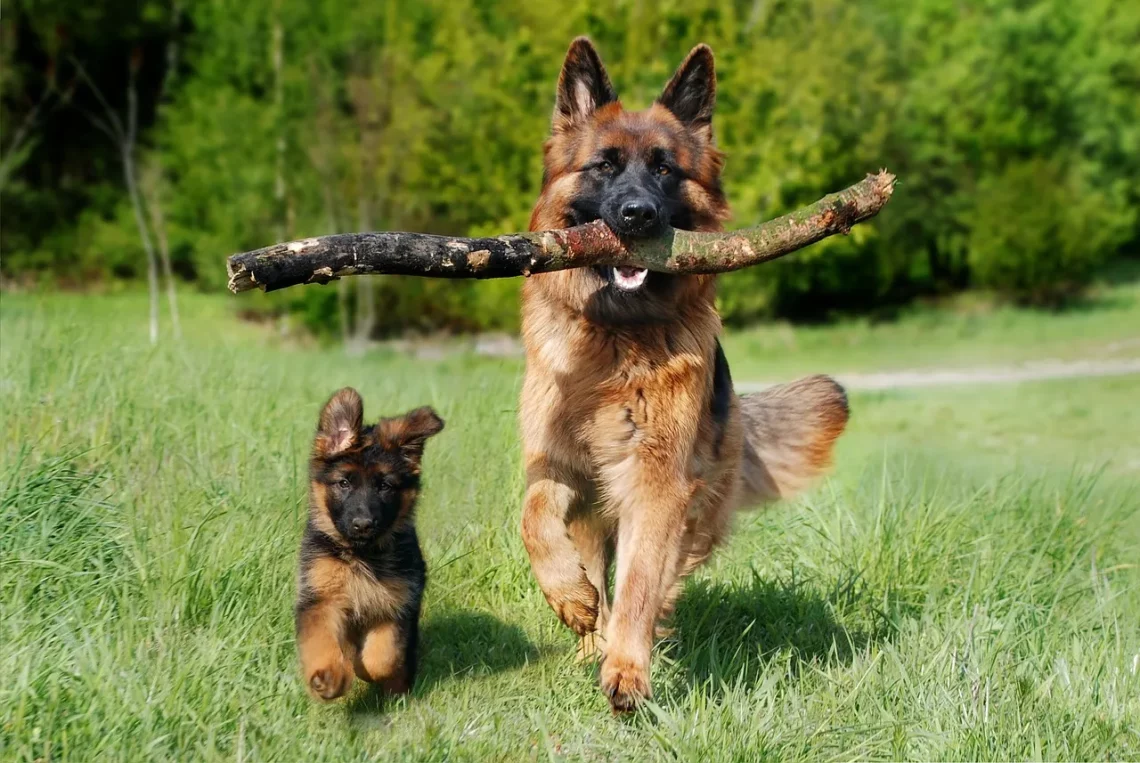
Why Is My Dog Biting His Tail and What You Should Know
Dogs are known for their playful and sometimes quirky personalities, but when you notice your dog biting his tail, it can raise concerns. This behavior, while often seen as amusing, can be indicative of underlying issues that need to be addressed. Understanding why dogs engage in this behavior is crucial for any pet owner who wants to ensure their furry friend is healthy and happy. Tail biting can stem from various factors, including boredom, anxiety, or even medical conditions.
As a responsible pet owner, it’s important to observe your dog closely and consider the context of the behavior. Is it happening during playtime, or does it seem more like a compulsive action? The key is to differentiate between normal play and signs of distress. Moreover, understanding the potential reasons behind this behavior can help you take appropriate action, whether that means providing more stimulation, seeking professional advice, or making lifestyle adjustments.
In this article, we’ll explore the different reasons dogs might bite their tails, allowing you to better comprehend this behavior and what steps you can take to address it. By understanding your dog’s actions, you can foster a more harmonious relationship and ensure your pet’s well-being.
Understanding the Causes of Tail Biting
Tail biting in dogs can arise from a variety of reasons, each demanding careful consideration and attention. One of the most common causes is boredom. Dogs, particularly those with high energy levels, require ample physical and mental stimulation. When they do not receive enough exercise or engaging activities, they may resort to tail biting as a form of self-entertainment. This behavior can be misinterpreted as playfulness but is, in fact, a signal that your dog is seeking something to do.
Another common cause is anxiety or stress. Just like humans, dogs can experience anxiety due to changes in their environment, such as moving to a new home, the arrival of a new family member, or loud noises like thunder or fireworks. Tail biting may serve as a coping mechanism for dogs dealing with anxiety. If your dog exhibits other signs of stress, such as excessive barking, chewing, or hiding, it’s essential to address the underlying causes of their anxiety.
Additionally, medical issues can also lead to tail biting. Skin irritations, allergies, or parasites like fleas or ticks may cause discomfort, prompting your dog to bite or chew at their tail. In some cases, more serious health conditions, such as infections or neurological disorders, may also be at play. Therefore, if you notice your dog frequently biting his tail or if the behavior is accompanied by other concerning symptoms, consulting a veterinarian is crucial to rule out any medical problems.
By understanding the various causes behind tail biting, you can take proactive steps to address the issue. This may involve increasing your dog’s exercise routine, providing engaging toys, or creating a calming environment to reduce anxiety. Moreover, keeping an eye on your dog’s health and maintaining regular vet check-ups will ensure that any potential medical conditions are caught early.
Identifying Signs of Compulsive Behavior
While some tail biting may be harmless, it can sometimes develop into a compulsive behavior, which is more concerning. Compulsive behaviors are repetitive actions that serve no obvious purpose and can lead to self-harm. If your dog’s tail biting seems excessive or obsessive, it’s vital to recognize the signs of compulsive behavior.
One key indicator is the frequency and duration of the tail biting. If your dog is frequently turning to bite his tail, especially to the point of causing injury or irritation, it may indicate a deeper issue. You might also notice that your dog is not responsive to distractions or attempts to redirect his focus when he starts biting his tail. This lack of responsiveness is a hallmark of compulsive behaviors.
In addition to tail biting, other behaviors may accompany compulsive actions, such as excessive licking, pacing, or chewing on paws. These behaviors can indicate that your dog is experiencing significant stress or anxiety. It’s essential to monitor these behaviors closely and consider consulting a professional dog trainer or a veterinary behaviorist if they persist.
Creating a structured routine can help alleviate compulsive behaviors in dogs. Establishing regular exercise, playtime, and training sessions can provide the mental and physical stimulation your dog needs. Additionally, incorporating interactive toys and puzzles can engage your dog’s mind, reducing the likelihood of them engaging in compulsive behaviors.
If you suspect your dog is developing compulsive tail biting, it’s important not to punish them for the behavior, as this can increase anxiety and worsen the situation. Instead, focus on positive reinforcement techniques to encourage alternative behaviors and promote a sense of calm.
Providing Solutions and Alternatives
When it comes to addressing your dog’s tail biting, providing effective solutions and alternatives is key. The first step is to enhance your dog’s overall environment to reduce boredom and anxiety. This can include increasing daily exercise through longer walks, play sessions, or trips to the dog park. Engaging in physical activity not only burns off excess energy but also helps improve your dog’s mood and overall mental health.
In addition to physical exercise, mental stimulation is equally important. Interactive toys, puzzle feeders, and training games can keep your dog’s mind engaged and reduce the likelihood of them resorting to tail biting. Consider incorporating training sessions into your routine, as teaching your dog new commands and tricks is not only rewarding but also mentally stimulating.
Creating a calming environment is also essential for dogs that experience anxiety. Establish a safe space where your dog can retreat when feeling stressed. This could be a designated room with their bed, toys, and familiar items. Additionally, consider using calming aids, such as pheromone diffusers or anxiety wraps, which may help alleviate stress.
If the tail biting persists despite your efforts, it may be beneficial to consult with a veterinarian or a professional dog trainer. They can help identify any underlying medical issues and provide tailored recommendations based on your dog’s specific needs. In some cases, behavior modification techniques may be necessary to address compulsive behaviors effectively.
Ultimately, the goal is to foster a healthy and happy environment for your dog. By understanding their behavior and implementing appropriate solutions, you can help reduce tail biting and improve your dog’s overall quality of life.
When to Seek Professional Help
While many cases of tail biting can be addressed through environmental changes and increased stimulation, there are times when professional help is necessary. If your dog’s tail biting is severe, excessive, or accompanied by other troubling symptoms, it’s crucial to seek veterinary advice promptly.
Signs that indicate it may be time to consult a professional include persistent biting that leads to injuries, changes in appetite or behavior, excessive anxiety, or other compulsive behaviors. These symptoms could indicate an underlying medical condition or behavioral issue that requires expert assessment and intervention.
A veterinarian can perform a thorough examination to rule out any medical problems, such as skin infections, allergies, or parasites. If a medical issue is identified, appropriate treatment can be administered to alleviate your dog’s discomfort. In cases where there is no medical explanation, a veterinary behaviorist can help develop a customized behavior modification plan to address the tail biting.
Professional training can also be beneficial if your dog’s behavior stems from anxiety or stress. Trainers can teach you and your dog effective techniques to manage anxiety, reduce compulsive behaviors, and encourage positive habits. Sometimes, medication may also be recommended to help manage anxiety or compulsive behaviors, especially when they significantly impact your dog’s quality of life.
In conclusion, understanding why your dog is biting his tail is an essential part of responsible pet ownership. By being observant and proactive, you can address the behavior before it escalates into a more significant issue. Remember, while some tail biting can be benign, it’s crucial to prioritize your dog’s health and well-being. If in doubt, always consult with a professional for guidance.
*Disclaimer: This article is not intended to provide medical advice. Always consult your veterinarian for any health-related concerns regarding your pet.*




